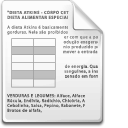How do domestic dogs influence intraguild interactions among native canids?
Morin, D., Lesmeister, D., Nielsen, C. and Schauber, E. (2018). How do domestic dogs influence intraguild interactions among native canids?. 5th European Congress of Conservation Biology. doi: 10.17011/conference/eccb2018/107576
Päivämäärä
2018Tekijänoikeudet
© the Authors, 2018
Harvest rates and bowhunter survey data in the Midwestern U.S. suggest both red fox (Vulpes vulpes) and gray fox (Urocyon cinereoargenteus) populations have declined, and a recent assessment of mesocarnivore occupancy across southern Illinois suggested gray fox range was contracting. Indices of coyote (Canis latrans) abundance increased concurrently and competition resulting in intraguild killing and spatial displacement to human-associated habitats have been proposed as agents of gray fox population decline. In addition, we previously demonstrated a strong elevation in both red fox and gray fox occupancy near human-developed areas if coyotes were present. One complication previously unaccounted for in assessing dynamics between coyotes and foxes is the presence of free-ranging domestic dogs (Canis familiaris), commonly associated with anthropogenic habitats. Thus, as gray foxes shift to areas adjacent to anthropogenic habitat to avoid coyotes, they may instead contend with domestic dogs. We utilized an extensive camera-trap data set collected over three years at 1,181 stations across 16 counties in southern Illinois, USA, to evaluate factors influencing species occupancy and interactions between domestic dogs, coyotes, gray foxes and red foxes. Naïve dog occupancy was 0.53 and estimated dog occupancy decreased with distance from structures and municipalities but increased with distance from roads. We found no evidence for species interactions between domestic dogs and coyotes, weak support for a negative interaction between dogs and red foxes, and strong evidence of a negative interaction between dogs and gray foxes. Thus, interacting competitive pressures from coyotes in forest habitats, red foxes in anthropogenic habitats, and the presence of free-ranging dogs along anthropogenic habitat edge, could result in dramatic cumulative impacts to gray fox populations across the region and contribute to the recent decline. ...
...
 ...
...
Julkaisija
Open Science Centre, University of JyväskyläKonferenssi
ECCB2018: 5th European Congress of Conservation Biology. 12th - 15th of June 2018, Jyväskylä, Finland
Alkuperäislähde
https://peerageofscience.org/conference/eccb2018/107576/Metadata
Näytä kaikki kuvailutiedotKokoelmat
- ECCB 2018 [712]
Lisenssi
Samankaltainen aineisto
Näytetään aineistoja, joilla on samankaltainen nimeke tai asiasanat.
-
Influence of colour, smell and taste on the survival of the wood tiger moth (Arctia plantaginis) adults during predation event
Lommi, Jenna (2021)Saalistajien torjumiseksi saalis voi käyttää erilaisia puolustusmekanismeja, jotka stimuloivat useita eri aisteja (ts. multimodaalista signalointia). Esimerkiksi aposemaattiset eliöt puolustautuvat varoitussignaalin lisäksi ... -
Negative engagement enforcing emotional labor in parasocial relationships between social media influencers and followers
Kalvi, Taru; Knuutinen, Iina (2021)Tämän tutkimuksen tarkoituksena oli pyrkiä ymmärtämään negatiivisen sitoutumisen roolia parasosiaalisissa suhteissa sosiaalisen median vaikuttajien ja seuraajien välisissä suhteissa. Tavoitteena oli löytää negatiivista ... -
The price of safety : food deprivation in early life influences the efficacy of chemical defence in an aposematic moth
Burdfield-Steel, Emily; Brain, Morgan; Rojas Zuluaga, Bibiana; Mappes, Johanna (Wiley-Blackwell Publishing Ltd., 2019)Aposematism is the combination of a primary signal with a secondary defence that predators must learn to associate with one another. However, variation in the level of defence, both within and between species, is very ... -
Social information use about novel aposematic prey is not influenced by a predator's previous experience with toxins
Hämäläinen, Liisa; Mappes, Johanna; Rowland, Hannah M.; Thorogood, Rose (Wiley-Blackwell Publishing Ltd., 2019)Aposematism is an effective antipredator strategy. However, the initial evolution and maintenance of aposematism are paradoxical because conspicuous prey are vulnerable to attack by naïve predators. Consequently, the ... -
G×E Interaction Influences Trajectories of Hand Grip Strength
Petersen, Inge; Pedersen, Nancy L.; Rantanen, Taina; Kremen, William S.; Johnson, Wendy; Panizzon, Matthew S.; Christiansen, Lene; Franz, Carol E.; McGue, Matt; Christensen, Kaare; Hamdi, Nayla R.; Krueger, Robert F.; Reynolds, Chandra (Springer US; Behavior Genetics Association, 2016)Age-related decline in grip strength predicts later life disability, frailty, lower well-being and cognitive change. While grip strength is heritable, genetic influence on change in grip strength has been relatively ignored, ...
Ellei toisin mainittu, julkisesti saatavilla olevia JYX-metatietoja (poislukien tiivistelmät) saa vapaasti uudelleenkäyttää CC0-lisenssillä.

